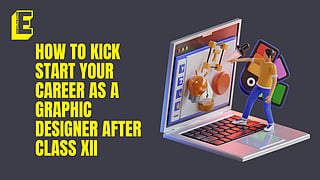
Transitioning from high school to university involves exciting yet daunting decisions about future careers. In today's era of rapid technological advancement, particularly with artificial intelligence (AI) transforming industries, traditional professions face challenges.
However, amidst this disruption, graphic design shines as a field offering limitless opportunities for those passionate about creativity and visual communication.
Unlike AI's proficiency in repetitive tasks, human designers contribute intuitive decision-making, emotional resonance, and creative expression. Businesses prioritise digital presence and brand identity, increasing the demand for skilled graphic designers who create compelling content across platforms, influencing global organisational strategies from branding and advertising to UX and interface design.
Emerging fields such as motion graphics, Virtual Reality (VR), and interactive media highlight the evolving field of graphic design.
For aspiring designers, creativity, innovation, and adaptability are the key steps to being successful.
- Begin by introspecting to understand your character traits and hobbies. This helps gauge your suitability for graphic design.
- Traits such as attention to detail, creativity, and an appreciation for aesthetics are valuable in this field.
- Proficiency in artistic mediums such as drawing, painting, or digital art is beneficial but not mandatory; a willingness to learn is essential.
- Enjoying technology and storytelling are also indicators of potential fit for a graphic design career.
- Opt for a design school that offers a comprehensive education covering both theoretical knowledge and practical skills.
- Look for institutions that foster a culture of experimentation and provide exposure to current industry trends.
- Ensure the school supports the development of a robust portfolio through internships, personal projects, and collaborations.
- Networking opportunities provided by the institution through workshops, master classes, and industry events are crucial for building connections in the field.
- Actively seek feedback to refine your skills and adapt to industry standards. This can be through jury presentations, feedback sessions, or online platforms.
- Establishing a professional online presence is vital for showcasing your work beyond college. Platforms like Behance, Instagram, and LinkedIn are valuable for networking with industry professionals and peers.
- Embrace constructive criticism to identify areas for improvement and refine your skills accordingly. This adaptability is key to staying competitive in the field.
- Graphic design is dynamic and influenced by technological advancements and evolving design trends.
- Attend master classes, webinars, and industry conferences to stay abreast of emerging styles, techniques, and mediums.
- Experiment with new tools and approaches to keep your creativity fresh and adaptable to changing client demands.
- Engage in a variety of projects including personal initiatives, freelance work, internships, and volunteer opportunities.
- Showcase your skills across different aspects of graphic design such as branding, typography, illustration, and web design.
- A diverse portfolio not only demonstrates your creativity and skills but also shows your versatility to potential employers or clients.
- Networking is essential for career growth in graphic design. Build relationships with peers, mentors, and professionals in the industry.
- Attend industry events, workshops, and join online forums to expand your professional network.
- Networking can lead to collaborations, job opportunities, mentorship, and valuable insights into industry practices.
- Proficiency in digital tools and software is fundamental for enhancing creativity and efficiency in graphic design.
- Stay updated with advancements in design software and explore new technologies relevant to graphic design.
- Experiment with multimedia integration including digital media, motion graphics, virtual reality (VR), and interactive design to broaden your skillset.
- Graphic design is a field that continually evolves. Commit to lifelong learning and skill development.
- Take advantage of online courses, workshops, and tutorials to expand your knowledge base and stay competitive.
- Embrace a curious mindset and remain adaptable to new technologies and design methodologies as they emerge in the industry.
